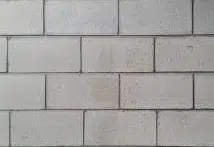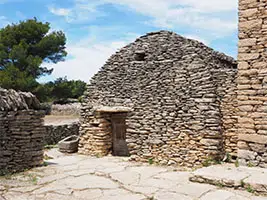 Masonry is a construction system based on the manual arrangement of masonry that is usually used without working. The elements are adjusted without order in terms of sizes or courses.
Masonry is a construction system based on the manual arrangement of masonry that is usually used without working. The elements are adjusted without order in terms of sizes or courses.
It can be said that masonry is based on the superposition of materials . This method is used to build walls and parameter boundaries on roads.
Currently, masonry pieces are generally joined with a mortar of sand , lime , cement and water . In ancient times, mud, horse or cow dung and straw, among other natural materials, were often used.
The so-called ordinary masonry , therefore, is carried out with a cement or lime mortar. The idea is that the smallest possible number of gaps must be filled with mortar, for which the bricks or stones have to adapt to each other.
Lime is made by calcining dolomite or limestone rocks, while cement is formed from a mixture of calcined and ground clay and limestone. The only case in which the fill is allowed to be seen from the outside is when there is a plan to plaster the factory later.
Concerted masonry , on the other hand, uses masonry with its regular parameter and joint faces, so that the seating takes place on flat surfaces. Does not include the use of gravel . Furthermore, the visible faces must have a polygonal shape and cover the gaps left by the adjacent masonry.
Another rule of concerted masonry is to avoid four edges coinciding in a single vertex. If the thickness of the masonry is greater than that of the masonry, the exposed facing walls are laid and then the main ones of the fill, which are wedged with rubble if necessary.
In faceted masonry , meanwhile, only the face of the exterior facing is carved and gravel (small stones) can be used on the interior .
Another type of masonry is dry masonry (also called dry masonry ), which does not require the use of a mortar. In this case, it is essential to select the masonry one by one to ensure that the structure is stable. To fill gaps and wedge the pieces, you can use gravel.
 In dry masonry, construction can be carried out with bricks or stones . The stability of these structures is difficult to achieve, and that is why those that have stood for decades or centuries are so admirable. Gravel , mentioned in the previous paragraph, are small stones that are also used in the consolidation of certain dirt roads. The dictionary defines this term as "waste" or "fragments of construction materials that are used to fill gaps in floors and walls."
In dry masonry, construction can be carried out with bricks or stones . The stability of these structures is difficult to achieve, and that is why those that have stood for decades or centuries are so admirable. Gravel , mentioned in the previous paragraph, are small stones that are also used in the consolidation of certain dirt roads. The dictionary defines this term as "waste" or "fragments of construction materials that are used to fill gaps in floors and walls."
Among the various examples of dry masonry that we can find in the world, some buildings from the Andes stand out, especially in Peru and the northern region of Bolivia. It is interesting to note that in Spain these types of constructions receive different names, such as dry rope walls or, simply, dry walls . There they are very common in traditional rural houses in various parts of Andalusia.
Although usually structural, decorative masonry also exists. It is common for these beautification walls to be built with polished and varnished stones.
One of the concepts related to masonry is rigging , the name given to the layout, shape and structure of a wall. If we take a building as a reference, its structure can be classified according to the material used for its construction and the way in which its pieces have been arranged.
